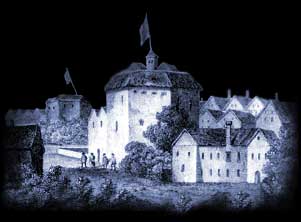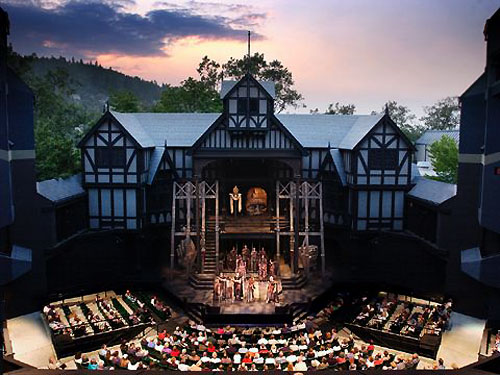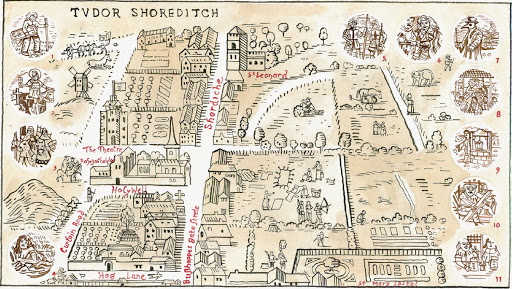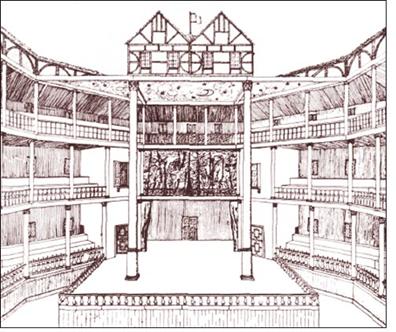Curtain Theatre History
Contents
In Elizabeth era, the theatre, with itself brought about a sudden revolution of sorts that influenced and inspired a number of similar establishments in the following years. So much so, that a total of 12 massive amphitheatres were built in and around London at that time. The Curtain Theatre, built-in 1577, one year after and not far from the south of The Theatre, was one such example.
Very obscure and little information is available about its plan and dimensions, yet it was described octagonal or circular and assumed to have a minimum of eight and maximum of 24 sides. The architecture of Curtain was similar to most of the Theaters built at that point of time. It had a raised performing stage that was surrounded by multiple tiers of covered galleries and balconies.

Curtain Theatre Shoreditch
Curtain Theatre was situated at Shoreditch, at the outskirts of London. Many people had a misconception that the name ‘Curtain’ was based on the front curtains that were a popular symbol of modern theatres at that time. In reality, it got its name from Curtain Close, a nearby meadow.
Elizabethan theatres had small enclosures for curtains at the back of the stage. The Proscenium stages with large front curtain did not appear until the Restoration period in England.
Who built the Curtain Theatre?
Again, not much is known about the creator of Curtain Theatre, Henry Lanman. Facts suggest that he was a theatrical entrepreneur, a gentleman, manager of the theatre from 1582 to 1592 and an extremely prudent businessman.
The last claim especially was supported by the fact that the Curtain was built using cheap and easily available building material and hence was completed within 6 months from the start of its construction, which was extremely commendable, given the standards at that time.

Elizabethan Times Curtain Theatre
Another advantage of using cheap materials was that the cost was pretty low and with the increasing popularity of the theatre, the profits soared almost five folds!
It is assumed that in the initial years of its inception, Curtain Theatre was run as a private concern by its owner Henry Lanman.
But in the later phase, it was transformed into a shareholder’s enterprise. Several people, from Shakespeare’s company-owned shares of The Curtain and are believed to have left the same for their successors in their last will.
But, The Curtain Theatre became famous and attained historical and literary importance when Shakespeare’s Company, the Lord Chamberlain’s Men, started to perform here after the closure of The Theatre in 1596.

Curtain Theatre Shakespeare
The Curtain played host to some of the most significant Shakespeare’s plays, including Romeo and Juliet and Henry V. One of the most interesting events that this theatre stood witness to was that in 1598, Shakespeare himself acted here on its stage in Ben Jonson’s Every Man in His Humour.
It is unknown what happened to The Curtain Theatre in the later years, as there’s no official mention of this theatre after 1627. If anyone happens to visit London today, they would be able to see the plaque that stands near Curtain Road today in remembrance of this great theatre.

Closing of the Curtain Theatre
The Curtain Theatre survived an earthquake in 1580. An eye witness’s account reveals how the audience had to jump from the higher gallery and turret tops where they stood. Many people were hurt while some got their legs and arms broken. But the theatre probably had to be closed during the Great Plague.
In spite of all the disastrous events of disease and fire breakouts, the Curtain Theatre functioned well till the 17th century. It thus had the longest history of all the playhouses of the Elizabethan times. The last stage performance at the Curtain was in 1625.
More Info On- Elizabethan Drama, George Inn Theater, Plays Stage and Theater, Theatre History, Fortune Elizabethan Theatre, Theatre Actors, Audience, Elizabethan Theatre Globe

